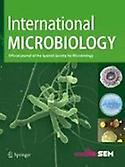Within the session Microorganisms and new materials, M. Auxiliadora Prieto, from the Center for Biological Research- Margarita Salas-CSIC, presented very interesting results of several research projects in collaboration with the industry on the production of bioplastics and also on their efficient degradation, as part of the platform “Sustainable plastics for a circular economy.”
A problem with the production of bioplastics is their high production cost. For this reason, the use of biopolymer-producing microorganisms, which can also grow on cheaper materials, such as waste from other products, may contribute to lower costs and a better market introduction. In the project SusPlast developed a modified strain of Pseudomonas putida for the efficient production of Polyhydroxyalkanoate (PHA) biopolymer from candy waste. It also includes other bacteria that produce a bioplastic rich in fluorinated residues, more resistant and hydrophobic, suitable, for example, for the manufacture of waterproof fabrics (project SINFONIA).
On the other hand, it is estimated that in 2050 50% of the plastic waste generated will be biodegradable, so it is very interesting to obtain more efficient degrading strains. To do this, in the project Mix-up, are developing strains that produce PHA depolymerase enzymes and systems for their use, such as their microencapsulation, for their release and use in the environment.
Summary prepared by María José Valderrama of the Complutense University of Madrid.





No comment yet, add your voice below!